Abstract
PEROXONE is an advanced oxidation process generated by combining ozone and hydrogen peroxide. This process stimulates the production of hydroxyl radicals, which have been shown to be superior to ozone for the destruction of some organic contaminants. In this study, pilot-scale experiments were conducted to evaluate the microbicidal effectiveness of PEROXONE and ozone against three model indicator groups. Escherichia coli and MS2 coliphage were seeded into the influent to the preozonation contactors of a pilot plant simulating conventional water treatment and were exposed to four ozone dosages (0.5, 1.0, 2.0, and 4.0 mg/liter), four hydrogen peroxide/ozone (H2O2/O3) weight ratios (0, 0.3, 0.5, and 0.8), and four contact times (4, 5, 12, and 16 min) in two source waters--Colorado River water and state project water--of different quality. The removal of heterotrophic plate count bacteria was also monitored. Results of the study indicated that the microbicidal activity of PEROXONE was greatly affected by the applied ozone dose, H2O2/O3 ratio, contact time, source water quality, and type of microorganism tested. At contact times of 5 min or less, ozone alone was a more potent bactericide than PEROXONE at all H2O2/O3 ratios tested. However, this decrease in the bactericidal potency of PEROXONE was dramatic only as the H2O2/O3 ratio was increased from 0.5 to 0.8. The fact that the bactericidal activity of PEROXONE generally decreased with increasing H2O2/O3 ratios was thought to be related to the lower ozone residuals produced. The viricidal activity of PEROXONE and ozone was comparable at all of the H2O2/O3 ratios. Heterotrophic plate count bacteria were the most resistant group of organisms. Greater inactivation of E. coli and MS2 was observed in Colorado River water than in state project water and appeared to result from differences in the turbidity and alkalinity of the two waters. Regardless of source water, greater than 4.5 log10 of E. coli and MS2 was inactivated at an applied ozone dosage of 2.0 mg/liter (and a 4-min contact time) when the H2O2/O3 ratio was less than or equal to 0.5. Comparative disinfection experiments indicated that free chlorine was the most potent bactericidal agent, followed (in descending order of effectiveness) by ozone, PEROXONE, and chloramines. These results indicate that the PEROXONE process must be optimized for each source water to achieve microbicidal effectiveness.
Full text
PDF

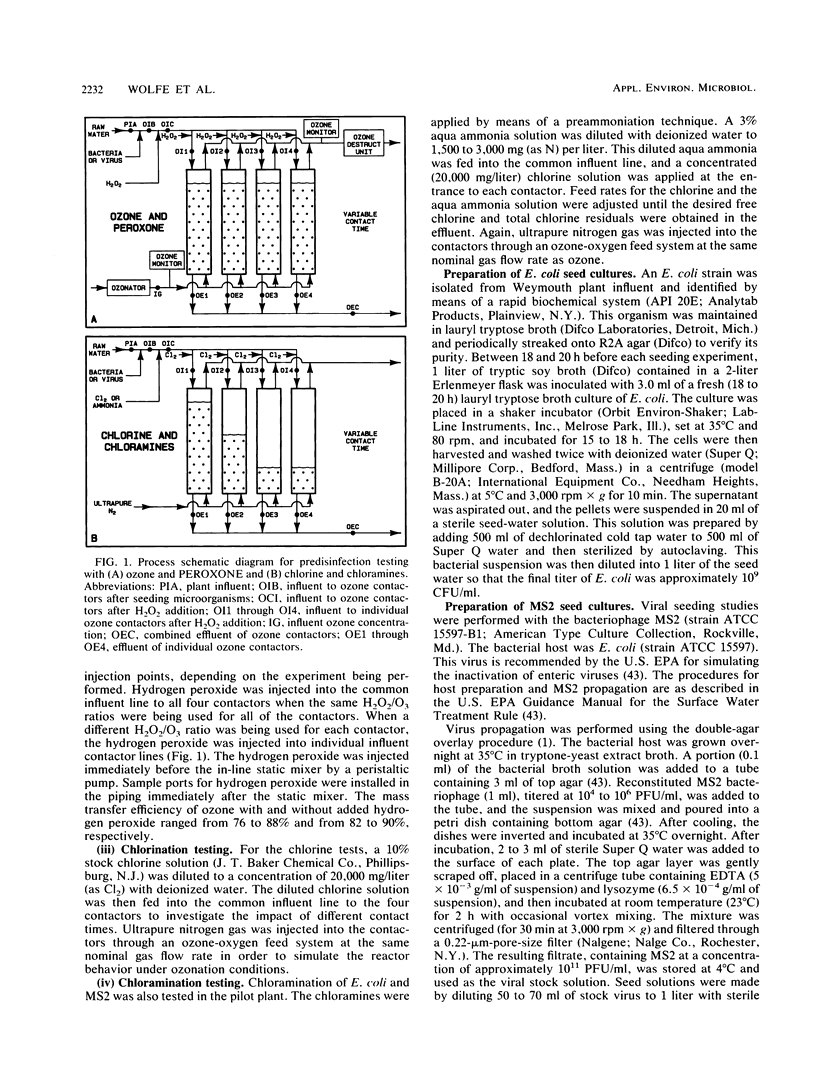
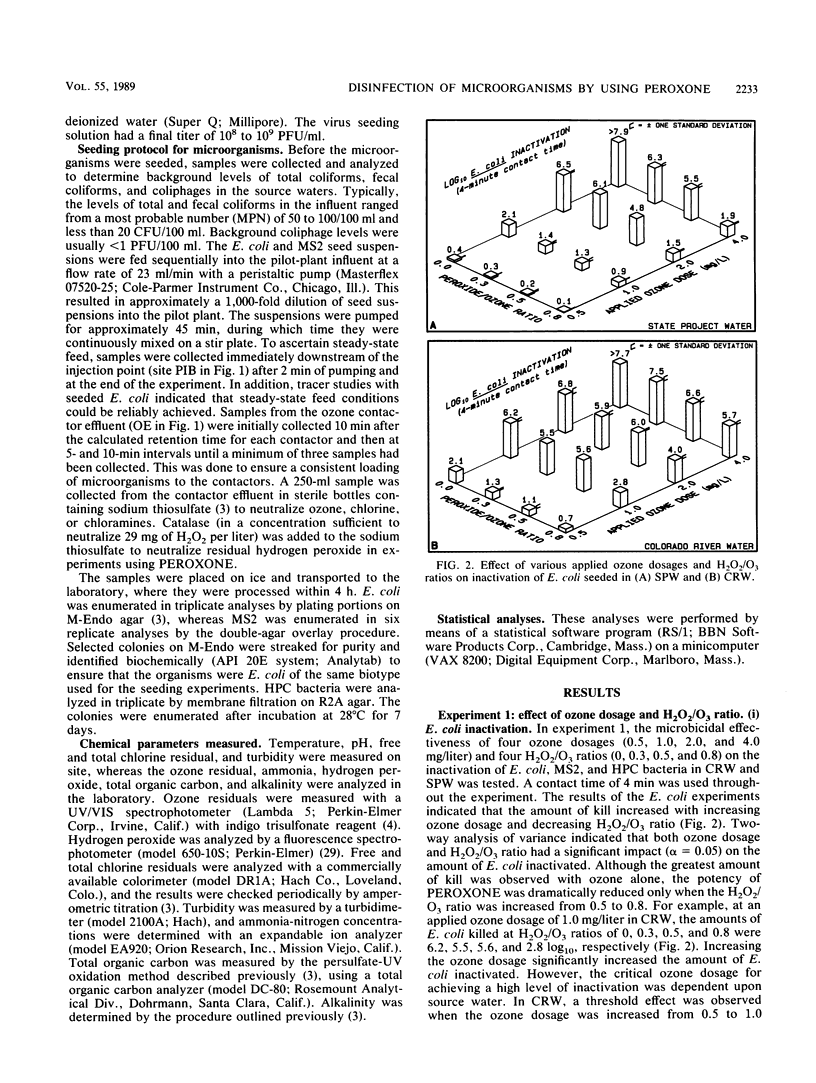
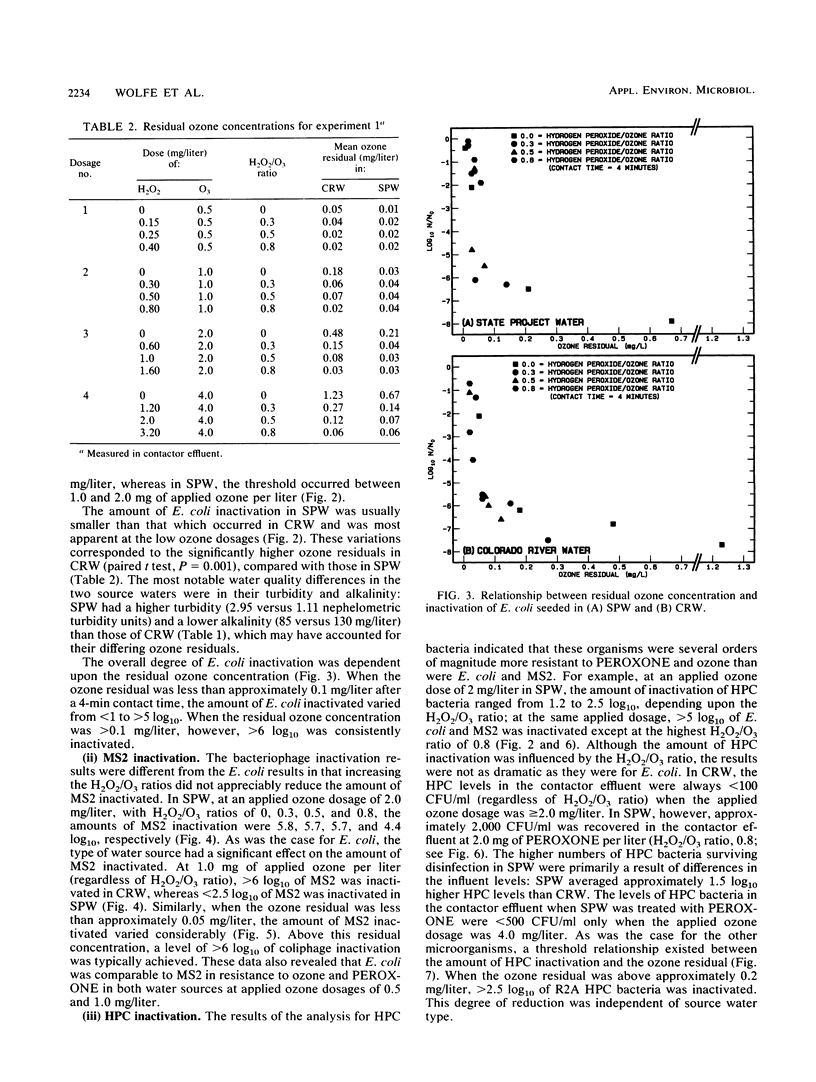




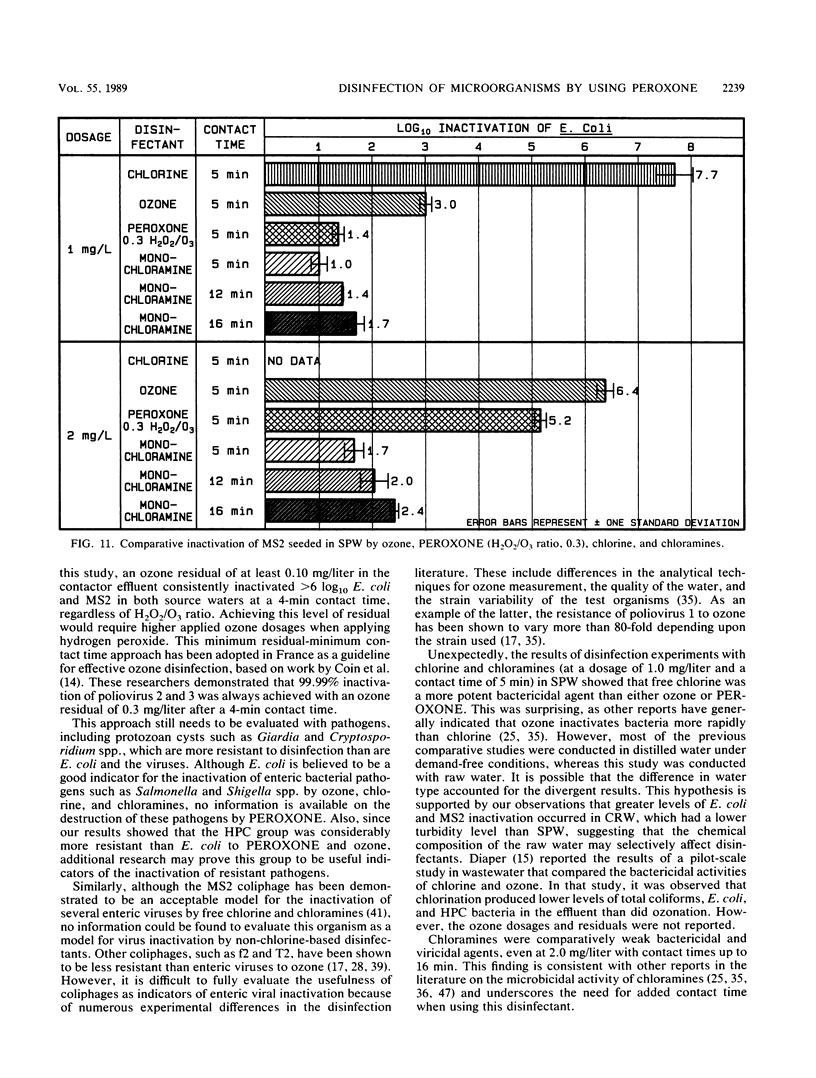

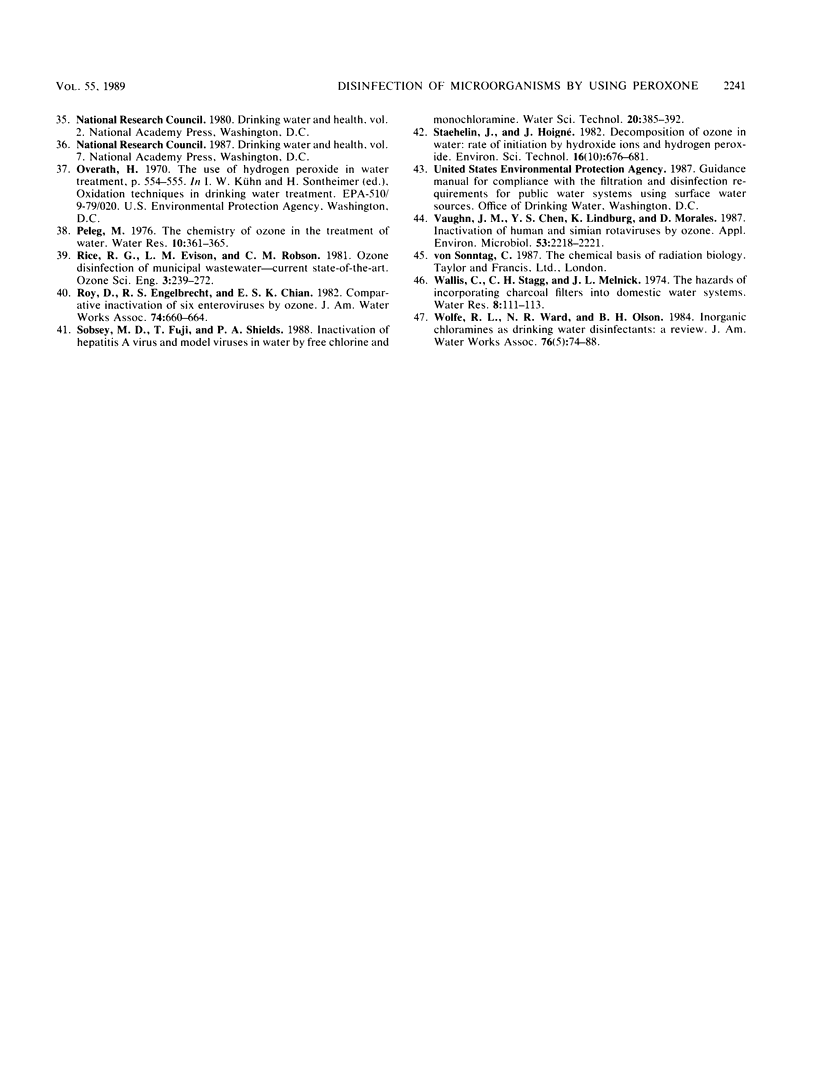
Selected References
These references are in PubMed. This may not be the complete list of references from this article.
- Bayliss C. E., Waites W. M. The combined effect of hydrogen peroxide and ultraviolet irradiation on bacterial spores. J Appl Bacteriol. 1979 Oct;47(2):263–269. doi: 10.1111/j.1365-2672.1979.tb01753.x. [DOI] [PubMed] [Google Scholar]
- Bayliss C. E., Waites W. M. The effect of hydrogen peroxide and ultraviolet irradiation on non-sporing bacteria. J Appl Bacteriol. 1980 Jun;48(3):417–422. doi: 10.1111/j.1365-2672.1980.tb01030.x. [DOI] [PubMed] [Google Scholar]
- Berman D., Rice E. W., Hoff J. C. Inactivation of particle-associated coliforms by chlorine and monochloramine. Appl Environ Microbiol. 1988 Feb;54(2):507–512. doi: 10.1128/aem.54.2.507-512.1988. [DOI] [PMC free article] [PubMed] [Google Scholar]
- Budde P. E., Nehm P., Boyle W. C. Alternatives to wastewater disinfection. J Water Pollut Control Fed. 1977 Oct;49(10):2144–2156. [PubMed] [Google Scholar]
- Burleson G. R., Murray T. M., Pollard M. Inactivation of viruses and bacteria by ozone, with and without sonication. Appl Microbiol. 1975 Mar;29(3):340–344. doi: 10.1128/am.29.3.340-344.1975. [DOI] [PMC free article] [PubMed] [Google Scholar]
- COIN L., HANNOUN C., GOMELLA C. INACTIVATION PAR L'OZONE DU VIRUS DE LA POLIOMY'ELITE PR'ESENT DANS LES EAUX. Presse Med. 1964 Sep 12;72:2153–2156. [PubMed] [Google Scholar]
- Camper A. K., LeChevallier M. W., Broadaway S. C., McFeters G. A. Bacteria associated with granular activated carbon particles in drinking water. Appl Environ Microbiol. 1986 Sep;52(3):434–438. doi: 10.1128/aem.52.3.434-438.1986. [DOI] [PMC free article] [PubMed] [Google Scholar]
- LeChevallier M. W., Hassenauer T. S., Camper A. K., McFeters G. A. Disinfection of bacteria attached to granular activated carbon. Appl Environ Microbiol. 1984 Nov;48(5):918–923. doi: 10.1128/aem.48.5.918-923.1984. [DOI] [PMC free article] [PubMed] [Google Scholar]
- LeChevallier M. W., Hassenauer T. S., Camper A. K., McFeters G. A. Disinfection of bacteria attached to granular activated carbon. Appl Environ Microbiol. 1984 Nov;48(5):918–923. doi: 10.1128/aem.48.5.918-923.1984. [DOI] [PMC free article] [PubMed] [Google Scholar]
- Miller R. G., Kopfler F. C., Condie L. W., Pereira M. A., Meier J. R., Ringhand H. P., Robinson M., Casto B. C. Results of toxicological testing of Jefferson Parish pilot plant samples. Environ Health Perspect. 1986 Nov;69:129–139. doi: 10.1289/ehp.8669129. [DOI] [PMC free article] [PubMed] [Google Scholar]
- Vaughn J. M., Chen Y. S., Lindburg K., Morales D. Inactivation of human and simian rotaviruses by ozone. Appl Environ Microbiol. 1987 Sep;53(9):2218–2221. doi: 10.1128/aem.53.9.2218-2221.1987. [DOI] [PMC free article] [PubMed] [Google Scholar]


